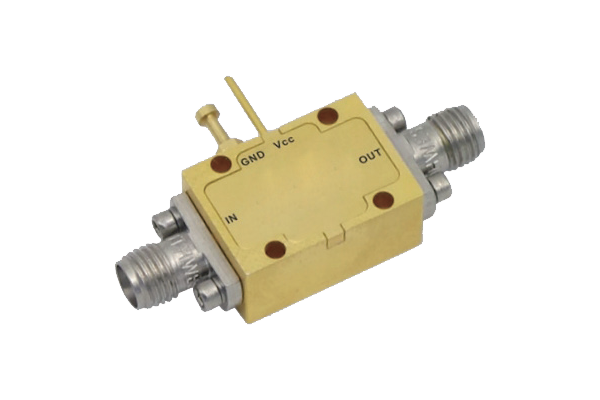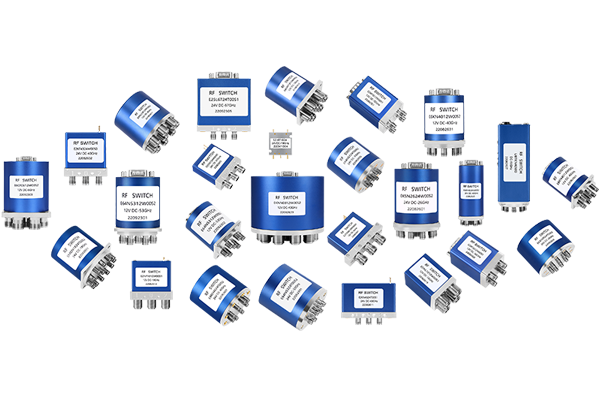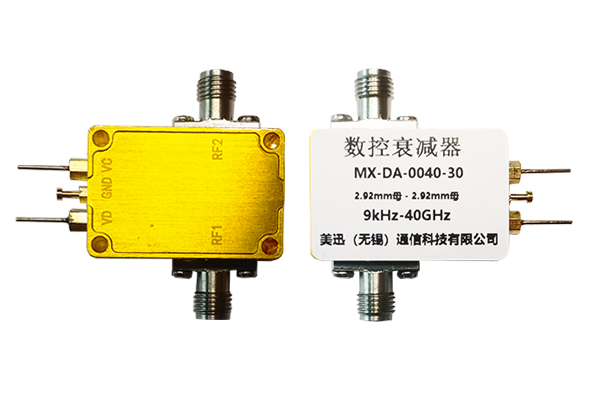
Pin diodes are established as major constituents in high-frequency electronics due to their natural device characteristics Their fast toggling behavior plus small capacitance and reduced insertion loss renders them apt for use in switch modulator and attenuator circuits. The essential process enabling PIN diode switching is manipulating current through the diode using a biasing voltage. Biasing the diode adjusts the depletion region size in the p-n junction, changing its conductive state. Bias adjustment yields effective PIN diode switching suitable for high-frequency use with limited distortion
Where timing precision and control matters PIN diodes get implemented into high-level circuit systems They can serve in RF filter networks to selectively transmit or block specific frequency ranges. Their capability to tolerate high-power signals allows deployment in amplifiers power dividers and generator equipment. Miniaturized high-efficiency PIN diodes now find more applications in wireless and radar technologies
Evaluating Coaxial Switch Design and Functionality
Creating coaxial switches is a challenging task that demands consideration of a variety of technical parameters Switch performance is influenced by factors like the switch type operating frequency and insertion loss characteristics. Designs should focus on cutting insertion loss and increasing isolation to improve switch performance
Analyzing performance involves measuring important parameters like return loss insertion loss and port isolation. These values come from combined use of simulations theoretical predictions and experimental validation. Rigorous performance analysis is necessary to secure dependable coaxial switch operation
- Simulation tools analytical methods and experimental techniques are frequently used to study coaxial switch behavior
- Temperature fluctuations impedance mismatch and manufacturing inconsistencies can strongly alter switch performance
- Emerging developments and novel techniques in switch design concentrate on boosting performance while minimizing footprint and energy use
LNA Performance Enhancement Techniques
Improving LNA performance efficiency and gain is key to maintaining high signal fidelity across applications Successful optimization depends on proper transistor selection correct biasing and appropriate circuit topology. Good LNA design practices focus on lowering noise and achieving high amplification with minimal distortion. Design evaluation relies heavily on simulation and modeling tools to measure noise effects of various choices. Achieving a reduced Noise Figure demonstrates the amplifier’s effectiveness in preserving signal amid internal noise
- Prioritizing low-noise transistors is crucial for optimal LNA performance
- Adopting proper optimal biasing is essential to reduce noise creation in devices
- Topology of the circuit strongly affects total noise performance
Tactics like impedance matching noise mitigation and feedback regulation advance LNA performance
RF Signal Routing with Pin Diode Switches

Pin diode switch arrangements provide adaptable and low-loss routing for RF signal management Such semiconductor switches toggle quickly between states to permit dynamic control of signal routes. Strong isolation and low insertion loss in PIN diodes contribute to reduced signal degradation. They are applied in antenna selection circuits duplexers and phased array antenna systems
Operation relies on changing the device resistance via applied control voltage to switch paths. As deactivated the diode provides high resistance, impeding RF signal transmission. Introducing a positive control voltage reduces resistance and opens the RF path
- Additionally moreover furthermore PIN diode switches offer rapid switching low power consumption and compact size
Different design configurations and network architectures of PIN diode switches provide flexible routing functions. By networking multiple switches designers can implement dynamic matrices that permit flexible path selections
Coaxial Microwave Switch Assessment and Efficacy

Evaluation and testing of coaxial microwave switches is vital for verifying correct operation in electronic networks. Numerous various and diverse factors influence switch performance such as insertion reflection transmission loss isolation switching speed and bandwidth. Complete assessment involves quantifying parameters over diverse operational and environmental test conditions
- Moreover additionally furthermore the evaluation ought to include reliability robustness durability and environmental tolerance considerations
- Ultimately findings from a thorough evaluation yield critical valuable essential insights and data for selecting designing and optimizing switches for targeted uses
Thorough Review of Noise Reduction Methods for LNAs
LNAs are indispensable in wireless RF communication systems because they raise weak signals while suppressing noise. This review article offers an in-depth examination analysis and overview of LNA noise reduction approaches. We investigate explore and discuss critical noise mechanisms like thermal shot and flicker noise. We also cover noise matching feedback network techniques and ideal bias strategies to mitigate noise. This review spotlights recent developments like new materials and inventive circuit designs that improve noise figures. Offering a thorough understanding of noise mitigation principles and methods the review helps designers and engineers build high performance RF systems
Applications of PIN Diodes for Fast Switching

PIN diodes have exceptional unique remarkable properties that suit high speed switching applications Low capacitance and low resistance contribute to very fast switching enabling precise timing control in demanding applications. Additionally PIN diodes show a linear adaptive response to voltage facilitating accurate amplitude modulation and switching behavior. Versatility flexibility and adaptability enable their suitable applicable and appropriate deployment in many high speed applications Examples include optical communications microwave circuits and signal processing devices equipment and hardware
IC Coaxial Switch and Circuit Switching Advances
Integrated coaxial switch circuits offer advancement in signal routing processing and handling across electronic systems circuits and devices. The ICs are designed to direct manage and control coaxial signal flow offering high frequency operation and reduced propagation insertion latency. IC miniaturization supports compact efficient reliable and robust designs appropriate for dense interfacing integration and connectivity contexts
- With careful meticulous and rigorous execution of these strategies designers can obtain LNAs exhibiting excellent noise performance for sensitive reliable systems With careful meticulous and rigorous execution of these strategies designers can obtain LNAs exhibiting excellent noise performance coaxial switch for sensitive reliable systems With careful meticulous and rigorous execution of these strategies designers can obtain LNAs exhibiting excellent noise performance for sensitive reliable systems Through careful meticulous and rigorous application of such methods engineers can design LNAs with top tier noise performance enabling dependable sensitive systems
- IC coaxial switch uses include telecommunications data communications and wireless network systems
- Integration of coaxial switch ICs serves aerospace defense and industrial automation industries
- Consumer electronics audio video equipment and test measurement instruments utilize IC coaxial switching
Design Considerations for LNAs at mmWave Frequencies

LNA engineering for mmWave bands involves dealing with increased attenuation and heightened noise impacts. Parasitic elements such as capacitance and inductance dominate performance at mmWave so layout and component selection are critical. Minimizing mismatch while maximizing gain is critical essential and important for mmWave LNA operation. Choosing appropriate active devices like HEMTs GaAs MESFETs or InP HBTs is key to achieving low noise at mmWave bands. Additionally furthermore moreover careful design implementation and optimization of matching networks is vital for efficient power transfer and impedance matching. Consideration of package parasitics is required because they may adversely impact LNA performance at mmWave. Implementing low-loss transmission lines along with proper ground plane design is essential necessary and important for reducing reflection and ensuring bandwidth
Modeling Strategies for PIN Diode RF Switching
PIN diodes operate as essential components elements and parts in diverse RF switching applications. Comprehensive accurate and precise characterization of these devices is essential to enable design development and optimization of reliable high performance circuits. That entails analyzing evaluating and examining electrical voltage and current characteristics such as resistance impedance and conductance. Also characterized are frequency response bandwidth tuning capabilities and switching speed latency response time
Moreover furthermore additionally building accurate models simulations and representations for PIN diodes is essential crucial and vital to predict their RF system behavior. Various numerous diverse modeling approaches exist including lumped element distributed element and SPICE models. Choosing the proper model relies on the specific application requirements and the desired required expected accuracy
Sophisticated Advanced Methods for Minimal Noise Amplifiers
Engineering LNAs demands careful topology and component decisions to achieve superior noise performance. New and emerging semiconductor advances have led to innovative groundbreaking sophisticated design techniques that lower noise substantially.
Among several numerous numerous these techniques are employing utilizing implementing wideband matching networks incorporating low noise transistors with high intrinsic gain and optimizing biasing scheme strategy approach. Moreover advanced packaging techniques and effective thermal management significantly contribute to reducing external noise sources. By meticulously carefully and rigorously applying these methods developers can produce LNAs with superior noise performance enabling sensitive reliable electronics
